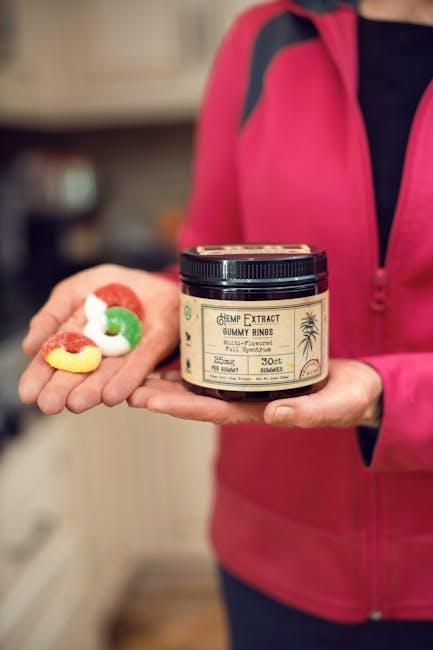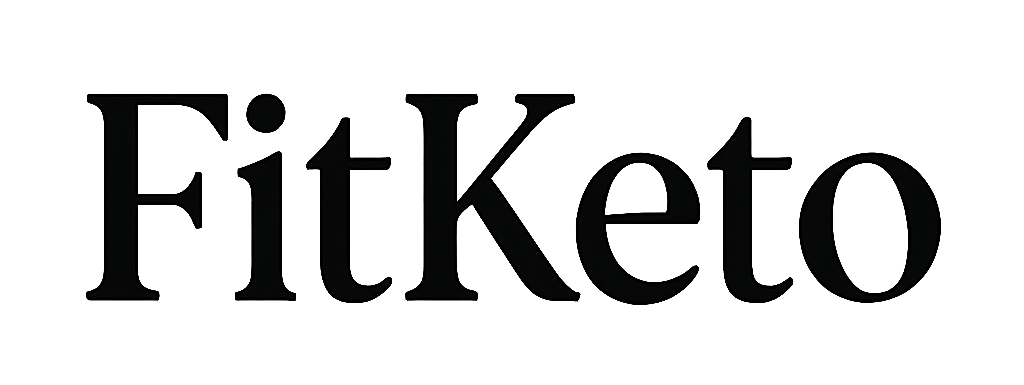In a world where health and wellness are increasingly personalized, dietary supplements have become a staple in many people’s daily routines. Yet, the shelves are lined with bottles and boxes adorned with a dizzying array of ingredients, claims, and numbers that can leave even the most health-conscious consumer scratching their head. How do you sift through this maze of information to find the supplements that truly meet your needs? Understanding how to read supplement labels is the key to unlocking clarity amid the confusion—a skill that empowers you to make informed choices for your well-being. This guide will walk you through the essential elements hidden in plain sight, turning labels from perplexing text into a transparent roadmap for your health journey.
Table of Contents
- Understanding the Backbone of Supplement Labels
- Decoding Ingredient Lists for Maximum Clarity
- Interpreting Dosage and Serving Size Information
- Spotting Quality Indicators and Certification Seals
- Recognizing Potential Allergens and Additives
- Q&A
- The Way Forward

Understanding the Backbone of Supplement Labels
At the heart of every supplement label lies crucial information designed to guide your health choices with transparency and accuracy. This includes the Supplement Facts panel, a standardized box that reveals serving sizes, active ingredients, and nutrient amounts, providing a snapshot of what you’re consuming. Alongside it, look for ingredient lists that detail all components, not just the actives, alerting you to fillers, binders, or allergens that might affect your well-being.
Decoding this information can empower you to make smart decisions tailored to your nutritional needs. Key elements commonly found include:
- Serving Size: How much of the product is recommended per intake.
- Active Ingredients: The substances primarily responsible for the supplement’s effects.
- Daily Value Percentage (%DV): Indicates how much a nutrient in a serving contributes to a daily diet based on a 2,000-calorie benchmark.
| Label Element | What It Shows | Why It Matters |
|---|---|---|
| Serving Size | Amount per dose | Prevents overuse |
| Active Ingredients | Main nutrients or compounds | Understand effectiveness |
| % Daily Value | Nutrition reference guide | Helps balance intake |

Decoding Ingredient Lists for Maximum Clarity
Understanding the ingredient list on supplement labels is an essential skill for anyone looking to make informed health choices. Ingredients are often listed in descending order by weight, but the fine print may include complex chemical names, proprietary blends, or less familiar compounds. To demystify these, focus first on the active ingredients—these are typically the ones driving the desired effects of the supplement. Recognizing common supplement components like vitamins, minerals, amino acids, and herbal extracts is your first step toward decoding what each product truly offers. Remember, some ingredients may be listed under scientific names, so don’t hesitate to use trusted resources or apps for quick research.
Additionally, watch for proprietary blends—these bundled ingredient groups might look comprehensive but often obscure exact quantities, making it tricky to assess potency. Here’s a quick guide to common label terms often found in the ingredient list:
| Term | Meaning | Why It Matters |
|---|---|---|
| Extract | Concentrated form of a plant or herb | Strength affects effectiveness |
| Hydrochloride | Ingredient bound with hydrochloric acid | Often enhances absorption |
| Proprietary Blend | Custom mixture without disclosing amounts | Limits dosage transparency |
| Inactive Ingredients | Fillers, binders, preservatives | Can affect allergies or sensitivities |

Interpreting Dosage and Serving Size Information
Understanding dosage and serving size is essential when navigating supplement labels. Serving size tells you the amount of the product considered a single serving, which helps gauge how much you should consume at once. Dosage, on the other hand, reveals the exact quantity of each active ingredient contained in that serving. Always double-check these numbers to ensure you’re adhering to recommended amounts and not exceeding safe limits. Keep in mind, the serving size may not always be a single pill or scoop—it could be multiple capsules or teaspoons, so pay attention before measuring your intake.
To simplify the process, consider the following tips when interpreting this information:
- Compare serving size to package size: Determine how many servings are in the total container to plan your usage accurately.
- Check ingredient amounts per serving: See what nutritional impact each serving has on your daily values.
- Understand measurement units: Dosage can be listed in milligrams (mg), micrograms (mcg), or international units (IU).
| Term | Meaning | Example |
|---|---|---|
| Serving Size | Amount considered one dose | 2 capsules |
| Dosage | Quantity of active ingredient per serving | 500 mg Vitamin C |
| Daily Value % | Percentage recommended daily intake | 83% |

Spotting Quality Indicators and Certification Seals
When inspecting supplement labels, it’s essential to look for marks that assure the product’s authenticity and quality. Certification seals from reputable organizations verify that the supplement meets stringent safety and ingredient standards. These seals often come from third-party testers who perform rigorous analyses, ensuring the product is free from contaminants and accurately labeled. Some widely recognized certifications include USP Verified, NSF International, and ConsumerLab, each symbolizing a commitment to transparency and trustworthiness.
Understanding these marks can save you from misleading claims and subpar products. Remember, seeing these tags doesn’t just indicate compliance but also reflects a supplement’s dedication to consumer health. Below is a quick reference guide to some common certification seals you might encounter:
| Certification | What It Means | Why It Matters |
|---|---|---|
| USP Verified | Verified for potency and purity | Ensures supplement contains listed ingredients |
| NSF Certified | Tests for banned substances | Trusted by athletes and professionals |
| ConsumerLab | Independent lab testing | Confirms label accuracy and safety |
- Check for holograms or official stamps that add authenticity.
- Beware of unofficial or unclear certifications—they may be misleading.
- Look for expiration dates alongside seals to ensure freshness.

Recognizing Potential Allergens and Additives
When examining supplement labels, it’s crucial to be vigilant about substances that could trigger allergic reactions or intolerance. Many products contain common allergens such as soy, gluten, dairy, shellfish, and nuts, which are often listed in the ingredients but can sometimes be hidden under less obvious names. For instance, ingredients like “whey” refer to dairy, and “lecithin” might be derived from soy. Always look for specific allergen statements, usually found near the ingredient list or in a warning section, to avoid unexpected irritants.
Beyond allergens, additives and preservatives play a significant role in product stability but may cause sensitivity in some users. Watch out for artificial colors, sweeteners, fillers, and binders, which can affect the supplement’s purity and potency. Here’s a quick reference to some common additives:
| Additive | Purpose | Potential Concern |
|---|---|---|
| Titanium Dioxide | Color enhancer | Possible irritant, linked to sensitivity |
| Saccharin | Artificial sweetener | May cause digestive issues |
| Magnesium Stearate | Flow agent | Rare allergic reactions |
| Silicon Dioxide | Anti-caking agent | Generally safe but can irritate some |
- Tip: When in doubt, consult a healthcare professional or opt for supplements labeled hypoallergenic or free from common allergens.
- Pro Tip: Use apps or websites that decode ingredient lists for a quicker allergen scan.
Q&A
Q: Why is it important to read supplement labels before buying or taking a product?
A: Reading supplement labels is like unlocking a secret code to your health. It helps you understand what you’re putting into your body, ensuring the product matches your needs and is safe. Labels reveal ingredients, dosage, potential allergens, and certifications, empowering you to make informed choices rather than relying on flashy marketing claims.
Q: What are the key parts of a supplement label to focus on?
A: Start with the Supplement Facts panel—it’s the nutritional GPS guiding you through serving size, active ingredients, and their amounts. Next, check the list of inactive ingredients, as they can include fillers or allergens. Always look for expiration dates and any warnings or contraindications. Certifications like NSF or USP seals are bonus checkpoints for quality assurance.
Q: How do I understand the ingredient list and dosage instructions?
A: The ingredient list reveals what’s inside, from vitamins and minerals to herbs and other compounds. Dosage instructions tell you how much and how often to take the supplement. Stick to these guidelines—more isn’t always better. Overdosing on certain nutrients can cause harm, so precise adherence is key.
Q: What should I watch out for in supplement labels that might be red flags?
A: Beware of labels that promise “miracle cures” or “instant results.” Avoid proprietary blends that don’t disclose exact ingredient amounts, as they can mask unsafe dosages. Also, be cautious if the label lacks contact information or doesn’t specify the manufacturer. These are signs to proceed with skepticism.
Q: Can I rely on labels to know if a supplement is safe and effective?
A: Labels provide vital information, but they’re just one piece of the puzzle. Safety and efficacy depend on the quality of ingredients, manufacturing practices, and your personal health profile. Consult with healthcare providers and look for third-party testing confirmations to supplement the label’s story.
Q: How do expiration dates on supplement labels affect usage?
A: Supplements are chemical mixtures that can degrade over time. An expiration date ensures the product maintains potency and safety until that day. Taking supplements past this date may result in reduced effectiveness or even harmful effects, so it’s best to respect these timelines.
Q: What role do claims and disclaimers on the label play?
A: Claims highlight potential benefits but often come with disclaimers noting that the product isn’t intended to diagnose, treat, cure, or prevent diseases. These disclaimers help keep expectations realistic and remind you that supplements should complement, not replace, medical treatments.
Q: How does the serving size affect how I interpret the nutritional content?
A: Nutritional info on labels is based on serving sizes, which might be less than what you typically consume. Always compare your actual intake to the serving size to understand how much of each nutrient or ingredient you’re getting, avoiding accidental overdoses or insufficient doses.
Q: What are “proprietary blends,” and why should I be cautious?
A: Proprietary blends bundle multiple ingredients under one total weight without disclosing exact amounts of each. This secrecy protects formulas but makes it hard to gauge safety and effectiveness. If you see such blends, research the ingredients individually and consider consulting a professional before use.
Q: How can I use supplement labels to compare products effectively?
A: Place two or more labels side by side and examine ingredient types, dosages, additives, certifications, and price per serving. Look beyond marketing hype; focus on transparency and how well the product suits your specific health goals. This method turns shopping into a fact-based, empowered decision.
The Way Forward
Navigating the dense world of supplement labels may seem daunting at first, but with a little practice and awareness, it becomes a valuable skill in making informed choices about your health. Remember, these labels are not just a collection of numbers and jargon—they are a roadmap to understanding what you’re putting into your body. By learning to read them carefully, you empower yourself to select supplements that truly align with your needs and goals. So next time you reach for that bottle, take a moment to decode the label; your body—and your peace of mind—will thank you.














Leave feedback about this